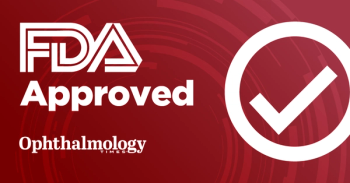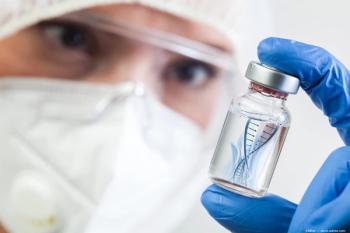
Emerging Treatments for Wet AMD
A panel of expert ophthalmologists provides insight into emerging clinical trial data on new molecules, surgical implants, and gene therapy in wet AMD.
Episodes in this series

Charles C. Wykoff, MD, PhD: Let’s look at the future. Many of you have already begun to touch on these topics. Diana, you are the leader in clinical trials. I love watching you present; I always learn from you. Tell us about the molecules in development specifically targeting this concept of durability of anti-VEGF agents. We’ll talk about the surgical stuff later, but specifically new molecules on the horizon in clinical trials. What do we have?
Diana V. Do, MD: There are a lot of exciting developments in [retinal disease treatments]. And certainly, one of the new highlights that was presented recently was faricimab, which is a bispecific molecule that inhibits both VEGF and angiopoietin-2. The top-line results were presented for the phase 3 clinical trials in wet AMD [age-related macular degeneration] and showed that faricimab was effective and safe and was noninferior to aflibercept in their patient population. In addition, faricimab was able to be dosed every 16 weeks in about 45% of the subjects. That suggests that faricimab does have the extended durability to inhibit CNV [choroidal neovascularization] activity. That’s an exciting development for an in office-based treatment. Additionally, new results were presented for KSI-301, which is an intravitreal anti-VEGF agent built on an antibody biopolymer conjugate platform, an ABC platform, from Kodiak Sciences Inc. This agent is also engineered for extended durability. And the phase 1b data were presented in 121 treatment-naïve patients with either wet AMD, diabetic macular edema, or retinal vein occlusion. Interestingly, the data showed that 2 out of every 3 patients treated with KSI-301 could have a 6-month treatment-free interval after receiving 3 loading doses and 1 year of follow-up. Those are very encouraging results on their ABC platform, and they’re in pivotal studies as well. Sophie could probably allude to some other agents in clinical practice and clinical trials right now. But it’s a very exciting time in retinal disease treatment.
Charles C. Wykoff, MD, PhD: It’s a great outline of the horizon. Sophie, tell us about the update now on the Port Delivery System [PDS]. We’ve been talking about this PDS surgical implant for a long time, years. Now we have high-quality phase 3 data assessing the efficacy compared to the monthly gold standard ranibizumab dosing for wet AMD. Tell us about your interpretation of the PDS data to date.
Sophie J. Bakri, MD: The data are really promising. The Port Delivery System is a port that’s implanted surgically, and ranibizumab is injected through the port every so often. In the phase 3 trial that was every 6 months, and the results were comparable to monthly ranibizumab. In the phase 2 trial, there were many patients who were able to be injected even longer than [every] 9 months, some every 15 months. The data are very promising. Now, this is a surgical procedure, and it does involve coming in for refills. And as you know with any surgical procedure, there are some complications. Potential complications could include vitreous hemorrhage, but the surgical techniques have evolved such that the vitreous hemorrhage rate now is much lower. Another concern is endophthalmitis, with having a port placed in the eye waiting for a refill. There’s still a lot that we will learn about, and right now it’s being evaluated by the FDA for consideration for use.
Charles C. Wykoff, MD, PhD: Great comments, a fascinating new approach. Mark, a lot of people are interested in this one-and-done approach. Could we use that word cure for some of these patients? That’s obviously an overstatement, but I used it to be a little provocative here. Let’s talk about gene therapy. We have 2 programs now, with many months, over a year of data. And both programs are now in humans, RGX-314 and ADVM-022. What’s your perception of these gene therapy programs? Where are we, and what can the field expect?
Mark P. Breazzano, MD: I think both drugs have a good shot at being transformative for our field. The RGX-314, like you mentioned, now it’s under phase 2b and 3 clinical trial with enrollment. And after a year of data, like you were saying, most patients were essentially injection free for a year. The anti-VEGF molecule can create on its own in the tissue with the subretinal delivery, or with the gene therapy, being able to make it itself is phenomenal. Who would have thought we’d be doing this 20 or 30 years ago? Being able to do that, and have it sustained, and not having to have injections or refills after that, is quite exciting. Then along with that, we have ADVM-022, which is also gene therapy. Unlike the other, it’s just a single intravitreal injection. The 1-year results from that showed promise in one of the cohorts, with not having any rescue injections needed for them as well. It’ll be exciting to see how the rest of the trials and data pan out for these 2 systems. It could be something on the near horizon for us in our arsenal.
Transcript edited for clarity.
Newsletter
Don’t miss out—get Ophthalmology Times updates on the latest clinical advancements and expert interviews, straight to your inbox.



















































.png)


